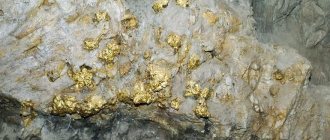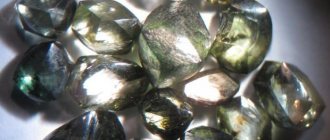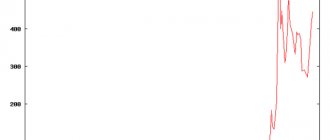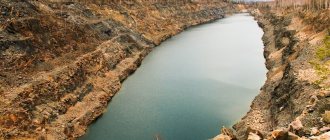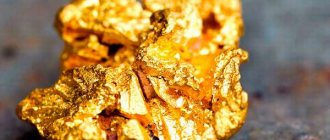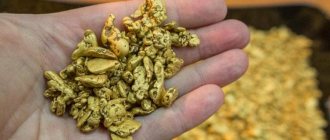Material from Documentation.
Jump to: navigation, search
Mining in the Orenburg region
- the main industry of the Orenburg region. It accounts for 36.1% of the region's gross regional product (2010), 50.9% of industrial output (2011), 3.7% of employment (2011) and 48.0% of capital investment (2018). [1][2]
The Orenburg region is one of the leading groups of Russian regions in terms of natural resources, volume of explored reserves and mining. The value of up to $500 billion according to the reference monograph “Geological Survey of Russia” speaks of the enormous potential opportunities of the Orenburg region for the development of industrial production.[3]
Over 180 deposits of a wide variety of ores, oil, gas, and mineral raw materials have been explored in the region. More than 80 different minerals have been found in the depths of the region. All these resources are located in a territory with a developed energy network, transport communications, and a sufficient labor force.[4] The leading place in the structure of the region's mining industry is occupied by oil and natural gas production.[5]
The volume of production in mining in the Orenburg region in 2009 was 186 billion rubles.[6]
[edit] History
Main article
:
History of mining in the Orenburg region
Coal, iron, copper and even gold have been found and mined in the Orenburg province since the 18th century, but the mining industry was concentrated in its northern part, in the Middle Urals.[7]
In 1930, within the current territory of the region in the Orsko-Khalilovsky region, mineral resources were discovered in such diversity and scale that the famous geologist academician Alexander Fersman called the Orenburg region the pearl of the Urals. In 1932, the Blavinskoye copper deposit was discovered. Later, Buguruslan oil and gas, ores of the eastern Orenburg region, and asbestos were added to the explored subsoil reserves. And although these mineral resources are incomparable in scale to the later discovered deposits of oil and gas, they continue to play their role in the economy of the region.[8]
In 1966, the Orenburg oil and gas condensate field was discovered near Orenburg (developed since 1971), which marked the beginning of the development of oil and gas production and processing in the region.[9]
In 1973-1979, the Kiembaevsky asbestos mining and processing plant was built.[10]
White spots
Several decades ago, when intensive excavations of ancient Scythian burials were carried out in the Sorochinsky district, archaeologists suspected one of the mounds right on the city street near that very house. For its residents there was little joy in this. It was forbidden to touch the mound. It could not be leveled in order to bring water supply to the house, and one had to enter the yard from a steep hill of an ancient embankment.
Rumors are like flies. Old-timers on the street said that one day strangers appeared here, introducing themselves as archaeologists. As soon as they started excavations, they suddenly abandoned their work due to some illness that approached them.
Some time later, the edge of the mound accidentally touched a motor grader and exposed stones with obvious traces of ancient processing. The townsfolk were about to slowly take them away for household needs, but the mention of the disease cooled the ardor and they stopped.
In the mass of people there is always hidden an imperceptible layer of adventurers who are ready at any time at the first mention of treasures to rush in search of them. I had to get acquainted with the reports of archaeological excavations in the early eighties of the last century of Scythian burial mounds at the Sorochinsky state farm. In these records every now and then there are marks “looted”.
Around the same time, under mysterious circumstances, an ancient church burned down in Spassky, which, by the way, was not so far from those mounds. Local residents claim that it contained ancient icons of almost Andrei Rublev himself. Of course, they have forgotten about the great icon painter, but there is no doubt that this charitable institution was amazingly well constructed and preserved. Knowledgeable people say that the cause of the arson could have been icons. They claim that this was the only church operating in a small village in Western Orenburg at that time. Nowadays a great many such churches and chapels have been built.
[edit] Geography
Main article
:
Geography of mineral extraction in the Orenburg region
For the western part of the region, the leading mineral resources are: oil, natural gas and condensate, asphaltites; brown coals and oil shale; rock and potassium-magnesium salts, phosphorites; chalk, gypsum, construction sands and sand-gravel mixtures, brick clays.[11]
For the eastern part of the region, the leading mineral resources are ores of non-ferrous and ferrous metals; ore and placer gold; asbestos; facing and building stones; high-quality limestones, dolomites, quartzites for the metallurgical industry; mineral paints; bentonite, expanded clay, ceramic and brick clays; cement raw materials; manifestations of rare earths.[12]
Auditor
Interest shifted from Kurmanaevka to the Sol-Iletsk district. There was a rumor among the ranks of antiquity collectors that archaeologists, in an attempt to get rid of the annoying diggers, allowed them to rummage in a small unpromising mound. They, without thinking twice, drove up the bulldozer and swept away the top of the embankment. And there!…. Here the conversation turned to a mysterious whisper.
Then they started talking about Sorochinsk again. One day, at the end of summer, one of the organizations took on the task of restoring an old mansion into an office. This strong, well-preserved building once belonged to the wealthy merchant Vysakovsky. After him, there was a school here, which was popularly called Vysakovka for a long time. And it had to happen that not long before this, a veteran journalist, my good comrade Fyodor Ovchinnikov, published in one of the Sorochinsk newspapers a legend about how before the revolution, a merchant, sensing bad times for himself, suddenly left his home with his family and moved to Samara, where he settled in a cramped barracks.
His sons then learned and became noble people. One of them, Ippolit, chose the profession of a financier and one day, under the pretext of checking financial authorities, he arrived in Sorochinsk. But he was not interested in the audit of the district financial department, but in the family jewelry walled up by his father in the basement. The entrance to them was traditionally arranged from the outside and covered with the well-known porch doors in our area, on which, as a rule, a flimsy lock was hung.
As you know, every legend has some truth. After the newspaper reading, the treasure hunters became wary. Give them free rein, they would dismantle the remarkable mansion brick by brick. Therefore, for safety reasons, the restoration contractor surrounded the construction site with a high fence, but the Central Asian migrant workers hired to dismantle the bricks got wind of the merchant and began to pass the construction waste almost through a sieve.
[edit] Types of minerals
[edit] Oil and gas
See also for more details
:
Oil production in the Orenburg region
,
Natural gas production in the Orenburg region
In 2004, the share of the Orenburg region in all-Russian oil production was 3.6%, in gas production - also 3.6%.[13]
192 oil and gas fields have been discovered in the region. Seismic exploration has prepared 165 structures for deep exploratory drilling with total promising oil resources of 222 million tons, free gas - 646 billion cubic meters. m, condensate - 81 million tons. 524 structures with potential for oil and gas have been identified. The Orenburg oil and gas condensate field, not only in terms of gas reserves, but also in terms of proven oil reserves, is classified as unique and occupies a prominent place in the European part of Russia. On the south-eastern outskirts of Buguruslan there is a discreet, even, perhaps, modest memorial sign on the mountainside. It was installed in honor of the labor feat of Orenburg oil workers. It was in this place, in a settlement behind the Tarhanka River, at the end of Pionerskaya Street, more than half a century ago - on July 26, 1937 - well No. 1 produced the first commercial oil in the Orenburg region.[14]
The oil wealth of the Orenburg region constitutes the most important part of the Volga-Ural oil reserves. The first oil wells appeared in the Orenburg region in the mid-thirties in the area of the city of Buguruslan. The explored oil-bearing area expanded.[15]
In the post-war years, many new oil and gas fields and deposits were discovered. The Sultangulovsko-Zaglyadinsky, Tarkhansko-Tverdilovsky, Ashirovsky, Efremo-Zykovsky, Mogutovsky, Pilyuginsky and other areas began to be exploited. Currently, oil and gas exploration is carried out in the region over a vast territory covering Buguruslansky, Abdulinsky, Buzuluksky, Sharlyksky, Oktyabrsky, Pervomaisky, Sorochinsky, Novosergievsky, Orenburg and other areas.[16]
New areas with commercial oil and gas reserves have been identified.[17]
[edit] Gas condensate
Main article
:
Gas condensate production in the Orenburg region
The Orenburg gas condensate field is the largest unique field in the world. Gas reserves contain condensate, hydrogen sulfide, mercaptans, sulfide, carbon dioxide and helium.[18]
The field is located south and southwest of the city of Orenburg and extends along the Ural River for 120 km with a width of 20 km. The main part of the deposit is located on the left bank of the Ural River. The total gas-bearing area is about 1500 square meters. km.[19]
Within the field there are a number of rural settlements and the Orenburg-Ilek highway and the Orenburg-Sol-Iletsk railway pass through.[20]
[edit] Oil shale
Main article
:
Oil shale mining in the Orenburg region
In the west of the Orenburg region there are deposits of oil shale, including the large Chagan deposit.[21]
[edit] Brown coal
Main article
:
Brown coal mining in the Orenburg region
In the north of the central zone of the Orenburg region, several brown coal deposits of the Tyulgan lignite basin have been explored. In total, the reserves of eight deposits belonging to the South Ural brown coal basin amount to about 740 million tons, with 67% of them concentrated in the depths of the Tyulgan and Khabarovsk deposits, suitable for open-pit mining. Currently, only the Tyulgan field is being exploited.[22]
The Ural-Caspian brown coal basin is located 7.5 km south of the city of Orenburg and is a strip 1 - 1.5 km wide and 25 km long. The surface is a slightly hilly plain, gently sloping to the south and indented by a dense network of streams, ravines and gullies. Tectonically, the basin consists of trough-like folds of northwestern strike, composed of Middle Jurassic and Paleogene-Neogene deposits.[23]
The lithological section is represented by waterproof clay packs with interlayers and lenses of sand. Middle Jurassic deposits contain three coal seams: upper, middle and main. The depth of the roof of the coal deposits is 18 - 71.7 m. The average thickness of the coal-bearing strata for the entire basin is 12.4 m.[24]
The main layer is the most consistent in thickness. In the Buguruslan area, the Sadkinskoe asphaltite deposit is known.[25]
[edit] Rock salt
Main article
:
Mining of rock salt in the Orenburg region
The Iletsk salt mine has long occupied an important place in the economy of the Orenburg region, which became a state-owned mine in 1753. To protect it from the attacks of nomads, the Iletsk defense (now the city of Sol-Iletsk) was built the next year.[26]
Up to 200 exiles and convicts worked on the development of salt. First, they cut two parallel deep furrows, and then, using blows from a heavy log, large blocks were broken off, crushed into smaller pieces, and carried on stretchers upstairs to the scales and to the store (warehouse). Annual salt production amounted to 500 thousand poods.[27]
Iletsk salt was of high quality and was successfully sold within the province and beyond.[28]
At the unique Iletsk salt deposit, created by nature, rock table salt is still being mined at a depth of 300 meters. Salt mining is carried out underground using a chamber mining system at a depth of about 300 m.[29]
They wrote earlier: “The Iletsk salt mines are the richest deposits of rock salt in the whole world, transparent, pure and strong as glass: salt shakers, crosses and other things can be made from it; it is sold for the first grade. The mass of salt here lies in the form of a huge irregular block, which in mining is called a salt stock. This stem is covered with a layer of earth of unequal thickness, from several arshins (1 arshin - 0.7 m) to several fathoms (1 fathom - 2.1 m); The hilly steppe spreads out in all directions from it. On the northern side rises a gypsum mountain, ending in a cliff in the west. From a distance it looks like a huge mound and serves as a beacon for caravans going from Khiva to Orenburg. The gypsum mountain serves as the boundary of the salt stock, followed by fertile soil in which no signs of salt are noticeable. According to research in 1851, the Iletsk salt deposit contains more than 74 billion poods. The Iletsk mines could supply the whole of Russia (assuming 35 million per year) with their salt for several thousand years.” (According to the calculations of the famous German scientist Alexander Humboldt, the whole of Europe can be satisfied with Iletsk salt for 10 thousand years).[30]
The chambers are mined layer by layer using mining machines that beat off the salt. Salt is delivered to the shafts by self-propelled cars and conveyors.[31]
The spent chambers are rooms with thirty-meter-high ceilings, 30 m wide and 500 m long, on the walls of which the harvester leaves a convex pattern with cutters, and they look like the kingdom of a white salt queen.[32]
Salt is dispensed from the chambers through shafts equipped with lifting systems. From the shafts, salt is transported by conveyor to the factory for processing.[33]
[edit] Iron ores
Main article
:
Iron ore mining in the Orenburg region
The main mining and processing enterprises of ferrous and non-ferrous metallurgy are concentrated in the eastern part of the region. Iron ores from the Orsko-Khalilovsky group of deposits are naturally alloyed. Preliminarily tested predicted resources for 9 deposits of copper and copper-zinc ores amount to 497 million tons. Their copper reserves exceed 7 million tons. In terms of reserves of cobalt-nickel ores, the Orenburg region is in second place in Russia.[34]
Exploration work in recent years in the eastern part of the region has revealed a promising area in terms of vanadium content and a number of occurrences of rare earth mineralization; the parameters of ore deposits are comparable to known similar objects developed abroad.[35]
It should be noted that the reserves of such a strategic resource for the region as copper and copper-zinc ores of high concentrations at current production rates can be exhausted in 30 - 35 years.[36]
It seems strategically important to transition to the formation of clusters of deep processing of metal ores to obtain maximum added value and to new technologies for the use of low concentration ores and dumps.[37]
In the eastern folded part of the Orenburg region, where igneous, intrusive and sedimentary rock complexes are widely developed, metallic minerals are of greatest importance. Numerous deposits of copper-pyrite and pyrite-polymetallic ores with accompanying noble metals are concentrated here. Among them, the most significant is the Gai copper-pyrite deposit.[38]
[edit] Building materials
Main article
:
Extraction of building materials in the Orenburg region
The subsoil of the Orenburg region is rich in building materials. The needs of the Orenburg construction industry are fully met with brick, expanded clay and refractory clays, and chalk. There are sufficient quantities of sand for concrete and sand-lime bricks. There are deposits of building stone everywhere. The region can supply crushed stone from high-strength and frost-resistant rocks, high-quality sand and gravel, fluxed limestone, and cement raw materials to other regions.[39]
[edit] Jasper
Main article
:
Jasper mining in the Orenburg region
Within the city of Orsk there are several jasper deposits, including Mount Colonel with deposits of unique variegated landscape Orsk jasper. Researchers believe that jasper was formed a long time ago, when there was an ancient sea in the place of the Ural Mountains. The first animals living in the ancient sea gradually died out and sank to the bottom, mixing for millions of years with emissions from underground volcanoes. This is how jasper was formed. Associated minerals gave it yellow, purple, red, green shades - more than a hundred different colors. In the second half of the 19th century, craftsmen made not only original boxes from Orsk jasper, but also unforgettable paintings.[40]
Variegated jaspers of Mount Colonel are represented by three varieties:[41]
- Jaspers with a concentric pattern. Alternating regular or fibrous rings are painted in pink, reddish-brown and black tones, and in greenish-gray tones.
- Brecciated jaspers are detrital fragments of jasper cemented by a fine-grained quartz-hematite aggregate.
- Fluid jaspers - a pattern in the form of light and dark red and purple streams.
The main component of Orsk jasper is fine-grained quartz, the content of which reaches 90%. Experts say that the amazing stone has up to 360 different colors, tones and shades.[42]
The Orskaya Jasper brand has long crossed the borders of our Motherland. Of the 12 products of Ural stone craftsmen demonstrated at the world exhibition in Montreal, 9 were made from Orsk jasper or with its participation. Noble jasper was used in the Lenin Mausoleum - the sarcophagus was decorated with it. Jasper decorates the Moscow metro stations, in particular, one of the most beautiful - Mayakovskaya. Jasper products exhibited in the Hermitage, Louvre, British Museum and other famous museums arouse universal admiration. A map of the Urals, assembled from 45 thousand pieces of jasper, adorns the Largest Throne, or St. George, Hall of the Winter Palace. Map area - 27 square meters. m.[43]
Yuzhural jasper was used for floor cladding in the Kremlin. By order of Napoleon, she was taken to Paris in 1812. In one of the cathedrals of the Moscow Kremlin - Annunciation - the floor is laid with jasper. Over the course of five centuries, millions of people walked over this stone, and it still lies today as if it was laid just yesterday.[44]
Many other ornamental stones fade over time, but jasper designs are eternal. Orsk jasper has another important advantage: it is a mineral of exceptionally high strength. In terms of strength, jasper is second only to diamond and corundum. The strength and chemical resistance of Orsk jasper make it possible to widely use it in technology.[45]
There are about 20 jasper deposits in the Orsk region. In addition to Mount Colonel, these are: Mount Preobrazhenskaya in the very center of the Old Town, Mount Kazan-Chikan, Jasper Mountain, as well as the deposits of Krutorozhenskoye, Voroshilovskoye, Raiskoye, Kalinovskoye, Khabarnoye, Kalpakkoye, Verkhne-Grilshskoye and many others, jasper is a glorious past and future of Orsk.[46]
[edit] Gold
Main article
:
Gold mining in the Orenburg region
Deposits of ore and placer gold in the region have been known since the mid-19th century. The revival of the gold mining industry is one of the directions for the development of the mineral resource base of the Orenburg region. Since 1998, the Orenburg region has returned to the number of gold-mining regions of Russia, producing gold and alluvial gold deposits.[47]
There are also prospects for identifying platinum group metals. There are more than 150 gold deposits and ore occurrences in the Orenburg Urals. Gold reserves are associated with quartz veins in black carbonaceous shales, with placers in deposits of ravines and rivers (“oblique layers”), with “iron hats” - weathering products over copper-pyrite deposits. The most promising for gold are the upper reaches of the Suunduk River. Intensive gold mining was carried out here in the second half of the 19th century and the beginning of the 20th century. From 1898 to the 50s of the 20th century, gold ore quartz veins of the Kumak and Aidirlinsky deposits were developed.[48]
In the upper reaches of the Suunduk, placer gold was mined by artisanal teams from the mid-18th century. In recent years, exploration has been carried out for a new type of deposit - layers of weathered rocks with a gold content of about 5 - 6 g/t. Quarry mining of gold-bearing rocks of the Kirov deposit has begun.[49]
The most significant gold mining area in the region is Kumaksky, almost entirely located in the Yasnensky district in the vicinity of the village of Kumak. The deposit has been mined from the surface, in some areas to a depth of 320 meters, and there are predicted reserves. At the western outskirts of the Kumak village there are zones of silicification, sulfide and gold mineralization. Gold deposit - Vasin site, provided by Orenburg Mining Company LLC, for the purpose of geological study and gold mining.[50]
The Kumakskoye deposit is a group of spoon gold placers, the Berezitovy Uval and Mechetny areas. The site, located 5.5 km southeast and 7 km east of the village of Kumak, was provided by Rossyp LLC for geological study.[51]
[edit] Non-ferrous metal ores
Main article
:
Mining of non-ferrous metal ores in the Orenburg region
The state balance of reserves as of 01/01/2004 takes into account 8 copper pyrite and pyrite-polymetallic deposits with reserves of copper in categories A+B+C 1,6633 thousand tons, zinc - 3054 thousand tons, located within Mednogorsk, Gai, Terensai and Dombarovsk ore districts.[52]
About 84% of the region's copper reserves are concentrated in the Gai deposit, the largest in the Ural region.[53]
The Orenburg region is rich in non-ferrous metals such as copper, nickel, zinc, lead.[54]
Non-ferrous metallurgy produces 9% of the region's industrial output, and currently there is an increase in output: by 2.9% in 2003.[55]
Non-ferrous metallurgy enterprises are:[56]
- JSC Gaisky Mining and Processing Plant, which mines and enriches copper and copper-zinc ore.
- LLC Mednogorsk Copper-Sulfur Plant, which produces blister copper and sulfuric acid.
- JSC "South Ural Nickel Plant", producing nickel, metal cobalt, ferronickel.
- JSC "Gaisky plant for processing non-ferrous metals "Splav"", producing copper, copper-nickel, brass, nickel rolled products, bimetallic radiators for heating systems.
- JSC "Cryolite", producing cryolite, sodium chloride, boric manganese, fertilizers, boric acid.
- Ormet JSC, which mines and enriches copper and copper-zinc ore.
The Letnee copper pyrite ore deposit is currently being developed by Gaisky GOK JSC. The Elenovskoye copper tourmaline ore deposit, located 2 km northeast of the village of Elenovka, is being developed by Ormet CJSC.[57]
Pot
The glimmer of hope to get to ancient treasures is fueled from time to time by newspapers. At one time, the regional “Orenburg region” published my article “Underground”. They talked about the old trading city of Sorochinsk with ancient merchant mansions with obligatory basements and numerous underground passages. After publication, someone called me incognito and, as if casually, asked me to tell me about some details, as if the author of the article had a map of the Sorochin treasures at hand. Another brought directly to the house in an old-fashioned string bag two ancient, rather tattered books in the Old Church Slavonic language. As it turned out later, these were “Book of Hours” and “Troparia”.
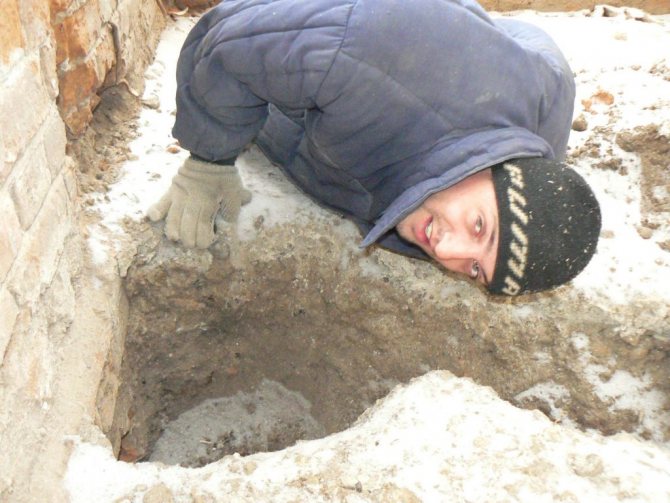
The stranger asked to buy antiquities for a thousand rubles apiece. The appearance of the collector looking like a homeless person was so pitiful that after a short auction they settled on one hundred rubles per copy.
At that time, one of the Sorochinsky businessmen, as almost eyewitnesses of what was happening said, during the restoration of an ancient mansion, found a pot of jewelry.
-Pressed! - was the opinion of the townspeople.
“What a fool!” said others. “I would have turned it over to the state and gotten it clean.” And so, all this is old trinkets.
Somehow, a rumor spread among treasure hunters that ancient coins had been discovered in an old destroyed house in the Kurmanaevsky district.
-The whole Klondike! — knowledgeable people exchanged information in a low voice and immediately disappeared for a while. There was very little information about actual finds, and then this topic disappeared as quickly as it appeared. They say that the treasure hunters who had flocked from almost the entire region had to be dispersed by the relevant authorities.
[edit] Indicators
[edit] Production indices
Production index in mining in the Orenburg region (% compared to the previous year):
- 2005: 102.9%[58]
- 2010: 107.6%[59]
- 2012: 99.5%[60]
- 2013: 99.6%[61]
- 2014: 99.5%[62]
- 2015: 96.3%[63]
- 2016: 96.1%[64]
- 2017: 98.9%[65]
- 2018: 101.4%[66]
- 2019: 103.9%[67]
[edit] Investments
Investments in fixed capital in mining in the Orenburg region (billion rubles):[68]
- 2017: 62.2457
- 2018: 75.7842
Share of mining in the distribution of investments in fixed assets in the Orenburg region:[69]
- 2017: 45.8%
- 2018: 48.0%
